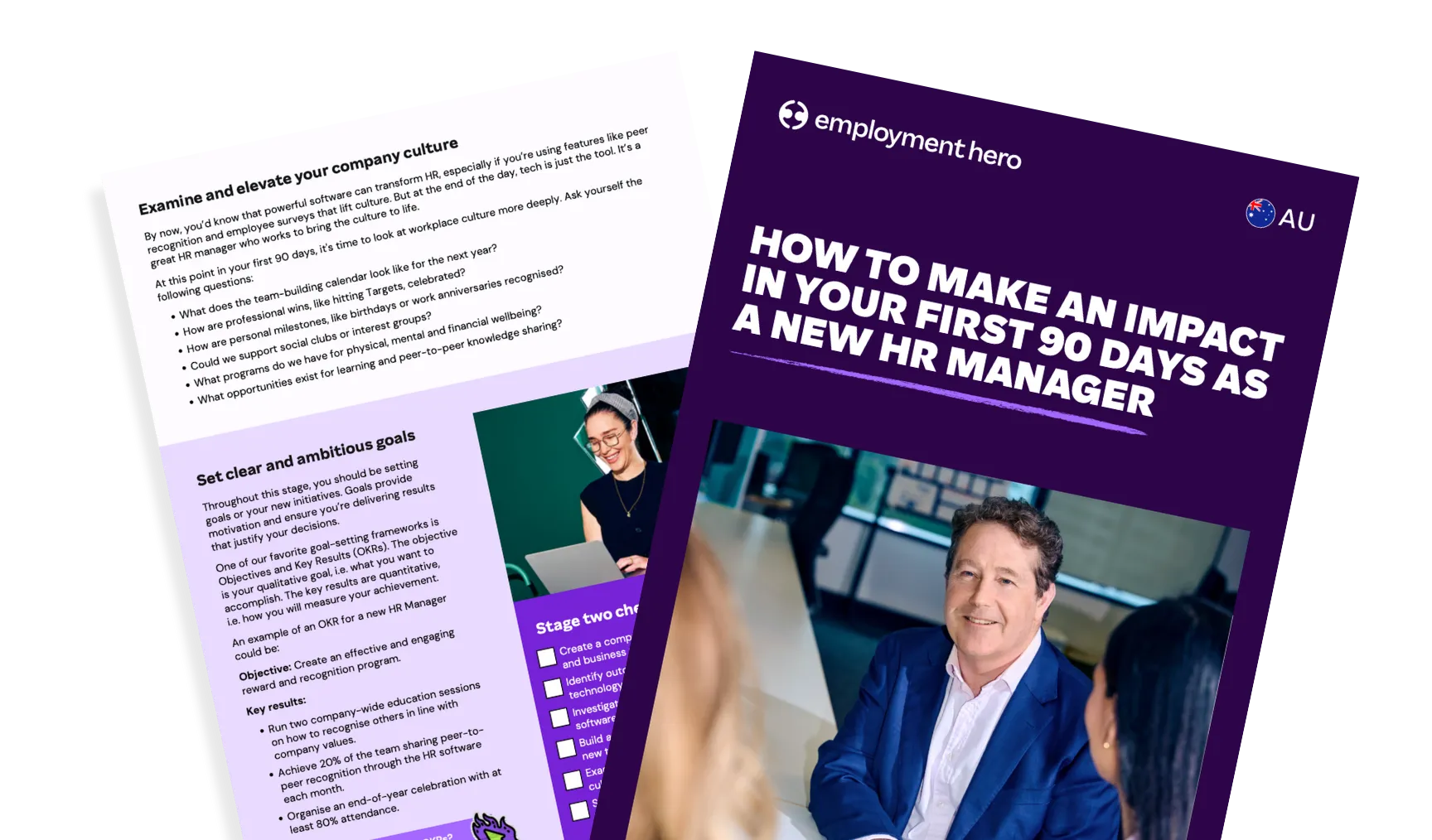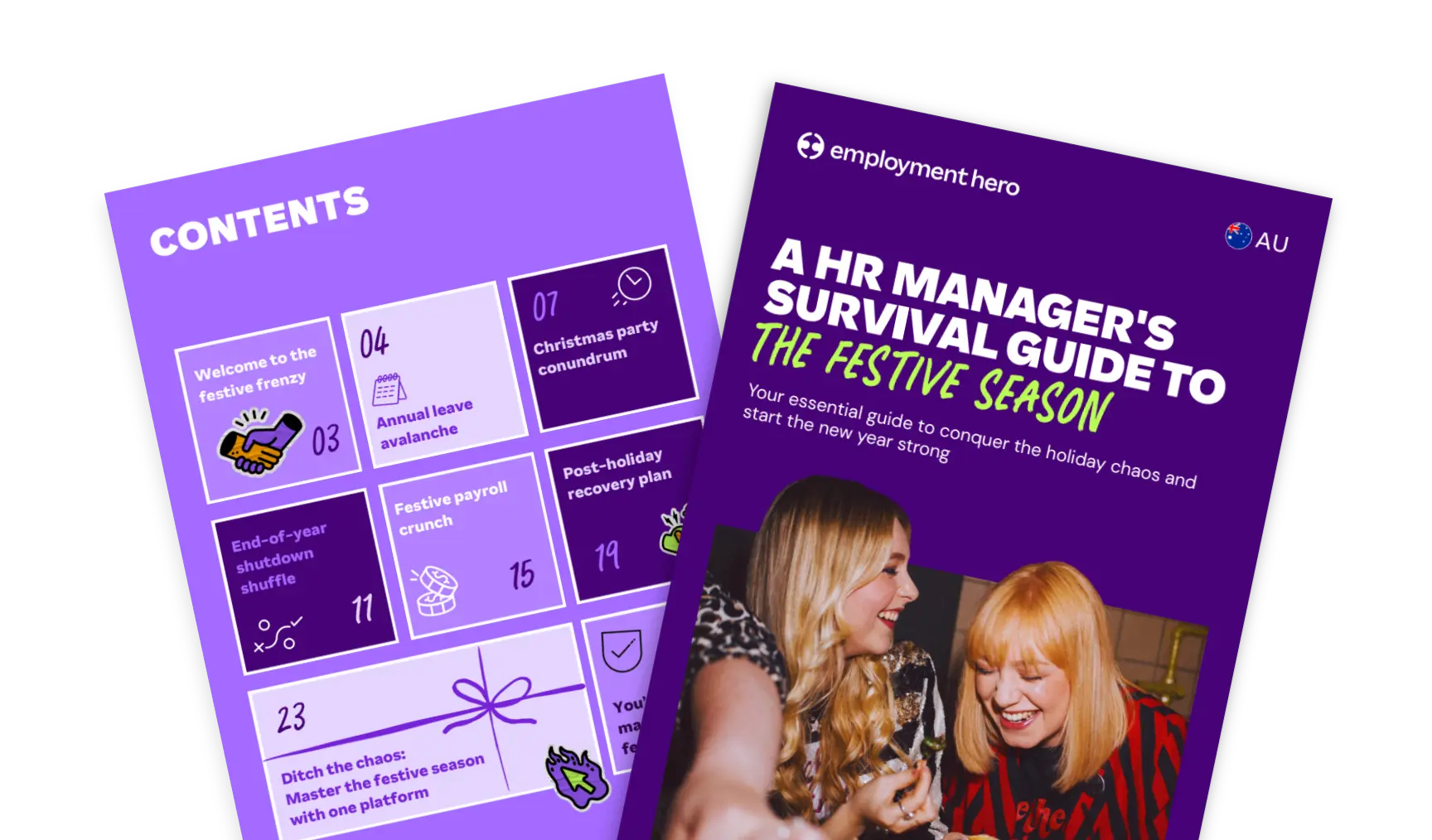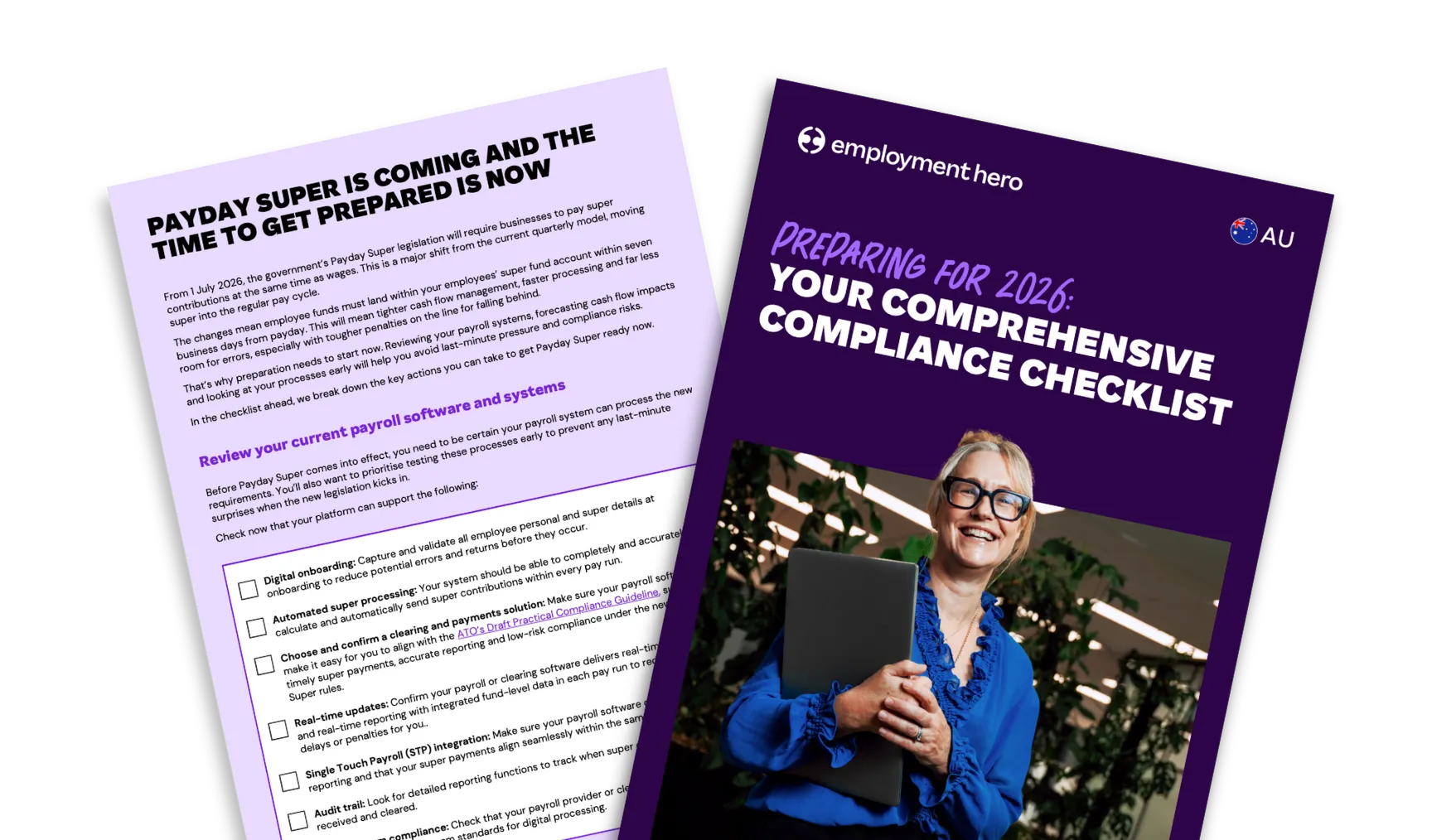Guide to Empathetic Leadership For Business Leaders
Published
Guide to Empathetic Leadership For Business Leaders
Published
Ever wondered why some teams thrive while others don’t? Your leadership style might hold the answer. The way you listen, respond, and show up day-to-day has more power than any policy or playbook in your professional life.
Empathetic leadership is all about building trust, driving performance, and creating a space where people can do their best work because they feel seen, heard, and supported.
We’ve put together a guide to help you understand what empathetic leadership is and how you can implement it in your organisation.
What’s covered in the guide?
Here’s what you’ll find inside:
- A clear, no-jargon explanation of what empathetic leadership is: This section breaks down empathetic leadership into something you can lean into, even on a deadline or in a tense team meeting.
- The key traits of an empathetic leader: A quick check-in on the habits and behaviours that build deeper connections (and where to start if you’re still working on it).
- Practical ways to build a culture of empathy at work: Whether you lead a scrappy startup or a growing team, you’ll get tools to lead by example and create systems that support real psychological safety.
What is an empathetic leadership style?
An empathetic leadership style is one where you genuinely understand and respond to the feelings, thoughts, and experiences of your team members. It involves taking the time to truly listen to what your team is saying, and recognising that each person brings their unique perspective to the workplace.
Rather than simply directing others, empathetic leaders create an environment of open dialogue where people feel safe to share ideas, concerns, and challenges without fear of judgment.
Why is workplace empathy important?
You’ve probably heard the phrase “People don’t leave bad jobs—they leave bad managers.” But it’s not always about toxic behaviour or poor systems. Sometimes, it’s a lack of empathy that quietly chips away at trust, motivation, and morale.
So, what does empathy actually look like at work, and why does it matter so much now?
In a world where people are balancing more than ever—care duties, personal life, health concerns, economic pressure—empathy has shifted from a “nice-to-have” to a leadership essential. It helps teams stay steady during change, and creates the conditions for better conversations, stronger decisions and fewer surprises.
Let’s unpack how that plays out:
Improving your leadership style
Developing empathy in leadership transforms how you approach different situations and individuals on your team. Instead of applying one-size-fits-all management approaches, you’ll begin recognising the unique motivations, strengths and challenges each person brings.
This tailored awareness helps you ask better questions, provide more effective support, and address the true causes of performance issues rather than just their symptoms.
For example: Is someone underperforming, or juggling responsibilities no one’s asked about? Is a team pushing back on change, or do they simply need clearer direction and support? Leaders who ask these questions early can course-correct faster and build trust in the process.
Demonstrating empathy for morale
Morale doesn’t hinge on grand gestures. Often, the quiet signals—how feedback is delivered, how effort is acknowledged, how much space people have to speak honestly is what shapes how a team feels daily.
Empathetic leaders know that trust and motivation go hand in hand. They’re more likely to catch when someone’s checked out, notice who’s taking on invisible emotional labour, and respond in ways that make people feel supported, not scrutinised. And in teams where people feel heard, they’re more likely to stick around, step up, and bring their best selves to their professional life.
Building psychological safety at scale
When people know they won’t be penalised for being honest, they’re more likely to raise red flags early, contribute ideas freely, and take ownership when things don’t go to plan. That kind of trust doesn’t just improve culture, it strengthens your team’s ability to perform under pressure.
Empathetic leaders do this by modelling curiosity over blame and listening without jumping straight to solutions. For example, during 1:1s, instead of jumping in with, “Why didn’t this get done?”, they ask, “What got in the way?” and then open up room for insight, not defensiveness. This approach doesn’t just improve communication, it often surfaces issues that would otherwise stay hidden until it’s too late to act on them.
This shift doesn’t take extra time. In fact, it often saves time by revealing what’s really going on before it spirals into something bigger.
Reducing rework and reactive management
When you practise empathetic leadership, you’ll likely see a significant reduction in costly rework and reactive management scenarios. By genuinely understanding your team members’ strengths, challenges, and work styles, you can anticipate issues before they become problems.
For example, you can transform your performance review plan by having informal check-ins with each team member about their professional goals, job performance, and concerns. Rather than simply pointing out errors after they occurred, this empathetic approach allows team members to voice challenges early, resulting in more targeted support and fewer last-minute crises requiring urgent intervention.
Designing policies that work in the real world
When creating workplace policies, empathetic leaders consider how these guidelines will actually function in day-to-day operations. You can develop more effective frameworks by consulting with team members who will be directly affected, rather than imposing rules from above.
For example, implementing a 360-degree review process that gathers feedback from colleagues at all levels demonstrates your commitment to workplace empathy.
Similarly, you can gather insights about flexible working arrangements by speaking with colleagues who have caring responsibilities or health considerations.
The most successful policies balance organisational requirements with a deep understanding of your team’s real-world challenges.
Common pitfalls of empathetic leadership
While empathy in leadership is highly regarded for its positive impact on teams and organisational outcomes, it’s important to discuss potential challenges as well. Even with the best intentions, you might encounter difficulties when applying these principles in real workplace scenarios. Understanding these pitfalls helps you develop a more balanced and sustainable approach to empathetic leadership.
Confusing empathy with avoiding difficult conversations
You might misinterpret empathy as always being agreeable or avoiding necessary conflict. True empathy involves addressing performance issues and having challenging conversations, just with greater awareness of how your approach affects the person.
Without this balance, your team may lack the direction and accountability needed to perform effectively. Use empathy to enhance, not replace, your ability to provide clear expectations and constructive feedback.
Burnout from emotional overextension
Taking on others’ emotional challenges without appropriate boundaries can lead to compassion fatigue and burnout. You might absorb team stresses without establishing healthy limits or self-care practices.
Sustainable empathy requires maintaining your own wellbeing. After all, you can’t effectively support others if you’re emotionally depleted. Develop strategies to process workplace emotions without becoming overwhelmed.
Inconsistent application across different team members
You’ll likely find empathy easier with certain personality types or working styles similar to your own. However, applying empathy selectively creates perception of favouritism and undermines trust.
Work consciously to understand all team members, including those whose perspectives might initially seem challenging to access. This commitment to consistency strengthens your credibility and ensures everyone benefits from your empathetic approach.
Failing to balance empathy with accountability
Perhaps the most common pitfall is swinging too far toward accommodation without maintaining appropriate standards. Empathy doesn’t mean lowering expectations or tolerating underperformance, it means understanding what’s driving behaviour and addressing root causes rather than symptoms.
Maintain high standards while providing appropriate support, recognising that true empathy involves believing in people’s capabilities while acknowledging their challenges.
By recognising these potential pitfalls, you can develop a more nuanced and effective leadership style that avoids these common traps while still harnessing the considerable benefits of leading with emotional intelligence.
What is emotional intelligence?
Emotional intelligence, also known as EQ – emotional quotient – is your ability to recognise, understand, and manage your own emotions, and to respond effectively to the feelings of others. It’s the foundation that supports truly empathetic leadership.
Leaders with high EQ don’t just react to situations. They pause, assess the emotional tone, and choose how to respond in a way that builds trust and clarity. This matters especially in high-pressure environments where tone, timing, and delivery can make or break a conversation. The concept comprises several interconnected skills that work together to enhance your empathetic leadership style:
- Self-awareness: Recognising your own emotions and understanding how your behaviour affects team members.
- Self-regulation: Managing your emotions appropriately in workplace contexts, expressing them constructively rather than suppressing them.
- Social awareness: Understanding what others are experiencing, including reading non-verbal cues and noticing when team members seem disengaged.
- Relationship management: Building trust through difficult conversations, constructive feedback, and thoughtful conflict resolution.
So, where does emotional intelligence fit alongside empathy, and what’s the difference between empathetic and compassionate leadership?
Empathy is the ability to understand and share what someone else is feeling. Compassion takes that a step further, adding a desire to act or help. Emotional intelligence is what allows you to balance both without burning out or overstepping. It’s the foundation of effective empathic leadership in today’s complex workplace.
For example:
- Empathetic leadership might mean recognising that a team member is overwhelmed and adjusting their workload or expectations.
- Compassionate leadership might involve offering support resources or stepping in more directly.
- Emotionally intelligent leadership is what helps you choose the right approach, depending on the person, the context, and what’s sustainable for the team as a whole.
When leaders develop emotional intelligence, they’re able to stay grounded, manage their reactions, and support others without losing perspective. These essential soft skills form the core of what makes empathetic leadership so effective.
How to embed empathy into systems and strategy
When empathy becomes woven into your organisation’s systems, instead of depending on individual leadership styles, its impact multiplies across teams.
Here’s how you can embed empathetic leadership principles into your organisational framework:
Designing empathetic journey touchpoints
Every employee experience—from recruitment through to exit—presents an opportunity to demonstrate genuine workplace empathy. Consider your onboarding process: does it acknowledge the human experience of joining a new team?
Similarly, thoughtful offboarding recognises a person’s contributions while providing practical support for their transition. These moments matter deeply to team members and shape how they speak about your organisation long after they’ve left.
Connecting empathy to business outcomes
As we’ve established, high-performing teams with empathic leaders have the potential to see higher engagement, lower turnover, and greater innovation capacity.
By tracking these correlations within your own organisation, you build a compelling business case for investing in empathy skills development across leadership tiers. This evidence-based approach helps secure buy-in from stakeholders who might otherwise view empathy as merely a ‘soft’ consideration.
This systems-focused approach ensures that empathetic leadership becomes integral to how your organisation functions, rather than depending on individual personality traits or goodwill. When empathy shapes your strategies and structures, it transforms from an optional leadership quality into a fundamental business advantage.
Taking your next step with empathetic leadership
Now that you understand the principles, benefits, and potential challenges of empathic leadership, what will your first action be? Perhaps it’s scheduling a conversation with a team member you’ve struggled to connect with, or reviewing an existing policy through an empathy lens.
Ready to put these principles into practice? Download our comprehensive guide or learn how our platform can transform your HR, recruitment and payroll processes with empathy at its core.
Register for the guide.
Related Resources
-
 Read more: Your first 90 days as an HR manager: a complete 30-60-90 day plan
Read more: Your first 90 days as an HR manager: a complete 30-60-90 day planYour first 90 days as an HR manager: a complete 30-60-90 day plan
Starting as an HR manager? Follow this 30-60-90 day plan to build trust, set strategy and make an impact in…
-
 Read more: HR Managers: Don’t just survive the festive season, master it
Read more: HR Managers: Don’t just survive the festive season, master itHR Managers: Don’t just survive the festive season, master it
Make year-end easier: manage leave, payroll, parties and shutdowns with confidence. Get practical tips for Australian SMEs. Download the free…
-
 Read more: Preparing for 2026: Your Compliance Checklist
Read more: Preparing for 2026: Your Compliance ChecklistPreparing for 2026: Your Compliance Checklist
Get your business ready for the 1 July 2026 changes. See practical steps for Payday Super, cash flow planning and…























